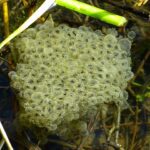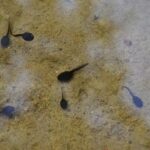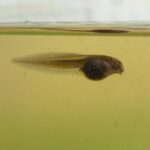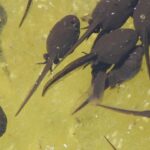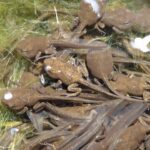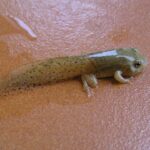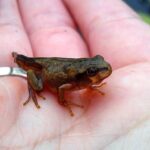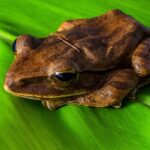- Zoology
- Daily Critter Facts
- For Teachers
- Study Guides
- Diseases & Parasites
- Contact

The Lifecycle of the Frog and Toad
The metamorphosis of a frog is 1 of nature’s most fascinating transformations, a journey that takes a creature from a purely aquatic existence to a life on land. This process, which involves a complete restructuring of the animal’s body, is a testament to the adaptability of life. It begins in a quiet pond, a puddle, or a slow-moving stream, where a female frog lays her eggs. These eggs are not encased in a hard shell like a bird’s but are protected by a gelatinous substance that swells in the water, forming a floating mass often called spawn.
The Beginning
The egg stage is the first chapter in a frog’s life. Within each small, transparent sphere, a tiny embryo begins to develop. The yolk inside the egg provides all the necessary nutrients for the growing embryo. The outer jelly layer serves a dual purpose: it protects the eggs from predators and keeps them moist, and it also helps to keep them floating together, which can sometimes aid in temperature regulation by keeping them closer to the sun-warmed surface of the water.
The Journey Continues
As the embryo develops, it starts to take on a recognizable form. The small black dot in the center of the egg begins to elongate, and a head and a tail start to take shape. After a period of a few days to a few weeks, depending on the species and the temperature of the water, the embryo is ready to hatch. It wriggles free from its protective jelly and emerges into the water as a tadpole.
And So Life Begins
A newly hatched tadpole is a creature perfectly adapted for life in the water. It has a rounded body, a long, powerful tail for swimming, and internal or external gills that allow it to breathe underwater. At this stage, a tadpole is essentially a small fish, complete with a 2-chambered heart. Its primary focus is on survival and growth.
Let the Feast Begin
Tadpoles are typically herbivorous, feeding on algae and other plant matter in the water. They have a small mouth with horny jaws that they use to scrape algae off rocks and plants. Their long, coiled intestine is designed to digest this plant-based diet. As they eat and grow, they are constantly swimming, exploring their aquatic world and trying to avoid the many predators that see them as an easy meal.
Abundant Changes are at Hand
During this stage, the tadpole’s body is undergoing a constant, though not yet visible, preparation for the changes to come. It grows larger and stores energy, a necessary step before the energy-intensive process of metamorphosis begins. The tadpole phase can last from a few weeks to a couple of years, depending on the frog species and environmental conditions like temperature and food availability.
Things are Taking Shape
The most dramatic changes begin with the appearance of hind legs. At first, these are just small buds near the base of the tail. Over time, they grow larger and more defined, with toes and joints developing. The tadpole continues to swim with its tail, but the hind legs start to play a role in its movement.
Bodily and Appetite Changes
As the hind legs develop, other profound changes occur within the tadpole’s body. Lungs begin to form, and the tadpole starts to swim to the surface of the water to gulp air. Its circulatory system changes from a 2-chambered heart to a 3-chambered heart to support the new lungs. Its digestive system also shortens and changes, preparing for a carnivorous diet of insects and other small prey.
The Morphing Continues
The front legs are next to appear, but they develop under the skin and are not visible at first. When they are ready, they burst through the skin, first 1 and then the other. At this point, the tadpole looks like a strange mix of fish and frog. It still has its tail, but it also has all 4 legs and is beginning to look more like its adult form.
Times are a Changing
Once the front legs emerge, the creature is known as a froglet. It still has a tail, but the tail is now being absorbed by the body, providing a source of nutrients during this transition period when the froglet’s mouth is changing and it may not be able to eat effectively. The froglet spends more and more time near the water’s edge, venturing onto land for short periods.
Goodbye Water… For Now
The final stage of metamorphosis is the complete absorption of the tail. Once the tail is gone, the frog is a young adult. Its lungs are fully functional, its legs are powerful, and its mouth has widened to a true frog’s mouth. It is now a terrestrial or semi-aquatic animal, ready to leave the water behind.
Hello World
The journey from a tiny egg in a gelatinous mass to a fully formed adult frog is a complex and perilous one. It is a beautiful example of life’s ability to adapt and change, a process that has been perfected over millions of years of evolution. The adult frog will now live its life on land, returning to the water only to breed and begin the cycle anew, continuing the remarkable story of frog metamorphosis.

